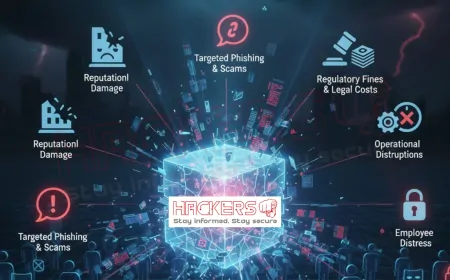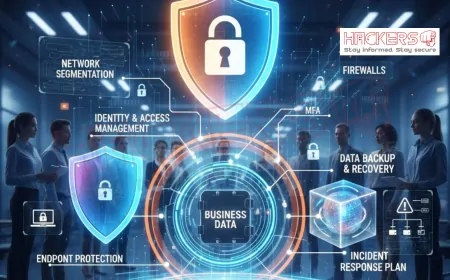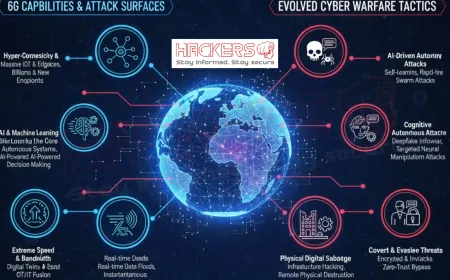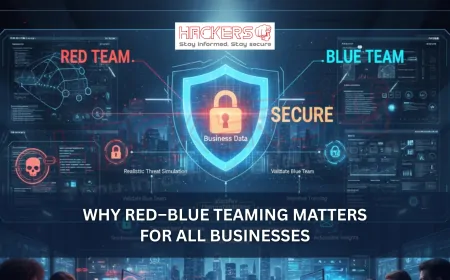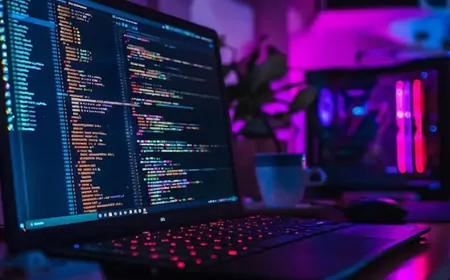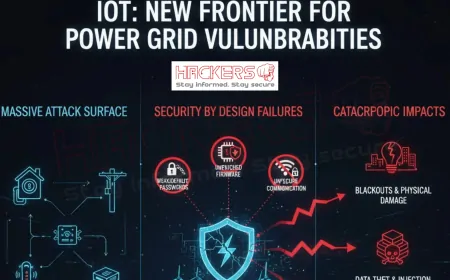What Makes AI Security Models Vulnerable to Poisoning Attacks?
Imagine trusting a security guard who was secretly trained to let thieves in. That is exactly what happens in a poisoning attack on artificial intelligence. AI systems are only as good as the data they learn from. If someone sneaks bad data into the training process, the AI can be tricked into making dangerous mistakes. In cybersecurity, where AI is used to detect malware, block hackers, and protect sensitive data, this weakness can have devastating consequences. In 2025, AI is the backbone of modern security. It powers everything from spam filters to advanced threat detection. But a hidden flaw threatens it all: poisoning attacks. These are not loud, explosive hacks. They are quiet, patient, and incredibly effective. This blog will explain what poisoning attacks are, why AI security models fall for them, and what can be done to fight back. Even if you are new to AI or cybersecurity, you will walk away understanding this growing danger.

Table of Contents
- What Is a Poisoning Attack?
- How AI Learns and Why Data Matters
- Types of Poisoning Attacks
- Why AI Security Models Are Especially Vulnerable
- Real-World Examples of Poisoned AI
- How Attackers Inject Poison
- Why Poisoning Is Hard to Detect
- Defense Strategies That Work
- Future Risks and Trends
- Conclusion
What Is a Poisoning Attack?
A poisoning attack happens when an attacker corrupts the training data used to teach an AI model. The goal is not to break the system directly. Instead, it is to change how the AI thinks. After training on poisoned data, the model makes wrong decisions that benefit the attacker.
Think of it like feeding a dog spoiled food. At first, it seems fine. But over time, it gets sick and behaves unpredictably. In AI, the "food" is data. If even a small portion is tainted, the entire model can fail in subtle but dangerous ways.
Unlike hacking a server or stealing passwords, poisoning is a long game. The damage may not show up until weeks or months later, when the AI is already trusted and deployed.
How AI Learns and Why Data Matters
AI does not learn like humans. It learns from examples. In machine learning, a model is shown thousands or millions of data points labeled as "good" or "bad." For example:
- A spam filter sees emails marked as spam or not spam.
- A malware detector sees files labeled safe or malicious.
- A fraud system sees transactions marked legitimate or fraudulent.
During training, the AI adjusts its internal rules to match these labels. Once trained, it applies those rules to new, unseen data. This process is called supervised learning. It works amazingly well when the training data is clean and reliable.
But here is the catch: the AI believes whatever it is told during training. If an attacker can change just 1 to 5 percent of the labels, they can shift the AI's entire decision boundary. That small change can turn a strong security tool into a useless or even harmful one.
Types of Poisoning Attacks
Not all poisoning attacks are the same. Here are the main types:
- Data poisoning: Changing labels or adding fake samples to the training set.
- Model poisoning: Directly altering the AI model during or after training.
- Backdoor attacks: Inserting a secret trigger that makes the AI misbehave only under specific conditions.
- Clean-label poisoning: Keeping correct labels but crafting inputs that fool the model anyway.
- Transfer learning attacks: Poisoning a base model that will be reused in many systems.
Each type targets a different part of the AI pipeline. But they all share one goal: make the AI trust the wrong things.
Why AI Security Models Are Especially Vulnerable
Security AI models are perfect targets for poisoning. Here is why:
- They use public or shared data: Many models train on open datasets or crowd-sourced threat feeds.
- They evolve over time: Models retrain regularly with new data from users or sensors.
- They operate in hostile environments: Attackers can submit data directly through APIs or forms.
- They make critical decisions: A wrong call can allow a breach or block legitimate users.
- They are hard to test fully: Security data is sensitive and limited.
Compare this to a photo recognition AI. If it mislabels a cat as a dog, no one gets hurt. But if a security AI labels malware as safe, the consequences are severe.
| Vulnerability Factor | Why It Enables Poisoning | Real-World Impact |
|---|---|---|
| Open Training Data | Anyone can contribute fake samples | Malware slips into public virus databases |
| Continuous Retraining | New data is added without full checks | Gradual drift toward attacker goals |
| User-Submitted Inputs | Attackers send crafted files or logs | Backdoors activated by special patterns |
| High Stakes | Even rare failures cause damage | One missed threat leads to breach |
| Limited Clean Data | Hard to verify every sample | Poison goes unnoticed in noise |
Real-World Examples of Poisoned AI
In 2024, a popular open-source malware dataset was found to contain 300 poisoned samples. These files were labeled as "safe" but contained hidden payloads. Over 50 security vendors retrained their models on this data. For months, their AI systems ignored a new ransomware family. Only after widespread infections did researchers trace the issue back to the tainted dataset.
Another incident involved a cloud security provider. Attackers used fake accounts to upload benign-looking logs with subtle anomalies. Over six months, the AI learned to treat those patterns as normal. When the real attack came, using the same patterns, the system raised no alarm. The breach cost the company $12 million in recovery.
These cases show poisoning is not theoretical. It is happening now.
How Attackers Inject Poison
Poisoning does not require supercomputers. Common methods include:
- Contributing to open datasets with fake labels
- Uploading crafted files through feedback forms
- Compromising data collection pipelines
- Using bot accounts to flood systems with bad examples
- Exploiting third-party data providers
Some attackers even sell "poisoning services" on the dark web. For a few thousand dollars, they will corrupt your competitor's AI model over time.
Why Poisoning Is Hard to Detect
Poisoned data often looks normal. A single bad sample in a million is invisible. Even experts struggle to spot it. Other challenges include:
- Stealth: Changes are tiny and spread out.
- Delayed effect: Damage appears long after injection.
- Lack of ground truth: No perfect "clean" dataset to compare against.
- Model complexity: Billions of internal parameters hide manipulation.
Traditional audits check code, not training data. That is like checking a cake for poison after it is baked, instead of inspecting the ingredients.
Defense Strategies That Work
Thankfully, solutions exist. Here are proven ways to protect AI security models:
- Data validation: Check source, timestamp, and consistency of every sample.
- Robust training: Use algorithms that resist small data changes.
- Differential privacy: Add noise to protect individual data points.
- Model verification: Test on held-out clean data before deployment.
- Provenance tracking: Log where every training sample came from.
- Ensemble models: Combine multiple AIs so one failure does not break all.
- Human-in-the-loop: Final decisions need expert review.
Companies like Microsoft and Google now use these methods in their security AI products.
Future Risks and Trends
As AI adoption grows, so do poisoning risks. Emerging threats include:
- Poisoning in federated learning systems
- AI supply chain attacks on pre-trained models
- Automated poisoning tools for sale
- Deepfake data injection in video or audio security AI
By 2030, experts predict poisoning will be the number one threat to AI reliability in critical systems.
Conclusion
AI security models are powerful, but they are not invincible. Poisoning attacks exploit their greatest strength: the ability to learn from data. By corrupting that data, attackers can turn a defender into an unwitting accomplice. The danger is real, silent, and growing.
But awareness is the first step. Companies must treat training data as critically as they treat code. Every sample needs scrutiny. Every model needs testing. And every deployment needs monitoring.
The future of AI security is not just about smarter algorithms. It is about cleaner, safer, and more transparent data. Protect the training process, and you protect the entire system. The fight against poisoning starts long before the AI ever sees a threat.
What is a poisoning attack?
It is when an attacker corrupts the training data to make an AI model behave incorrectly.
How much data needs to be poisoned?
Often just 1 to 5 percent is enough to shift the model's decisions.
Can poisoning happen after training?
Yes, through online learning or model updates with new data.
Why are security AI models high-value targets?
They protect critical systems, and a single failure can lead to major breaches.
What is a backdoor in AI?
A hidden trigger that makes the model misclassify only when the trigger is present.
Is open-source data safe for training?
No. It is a common vector for poisoning if not carefully vetted.
Can antivirus detect poisoned AI?
No. Poisoning affects behavior, not files, so traditional tools miss it.
What is clean-label poisoning?
Poisoning where labels are correct, but the input is crafted to mislead.
How can I tell if my AI was poisoned?
Look for unexpected errors, performance drops, or strange patterns in outputs.
Does encryption protect training data?
No. Encryption secures storage, but not the content during training.
What is differential privacy?
A technique that adds noise to data to prevent individual samples from dominating.
Can humans spot poisoned data?
Rarely. It requires statistical analysis and clean reference data.
Are cloud AI services vulnerable?
Yes, if they accept user data for retraining without strong checks.
What is model robustness?
The ability of an AI to maintain accuracy even with some bad inputs.
Should I stop using AI in security?
No. The benefits outweigh risks when proper safeguards are in place.
Who sells poisoning tools?
Cybercriminal groups on the dark web offer them as a service.
Can I audit my training data?
Yes. Use provenance logs, anomaly detection, and third-party reviews.
Is transfer learning risky?
Yes. A poisoned base model can affect all systems built on it.
What is the best defense?
Combine data validation, robust training, and continuous monitoring.
Will poisoning get worse?
Yes. As AI use grows, so will sophisticated poisoning techniques.
What's Your Reaction?



























